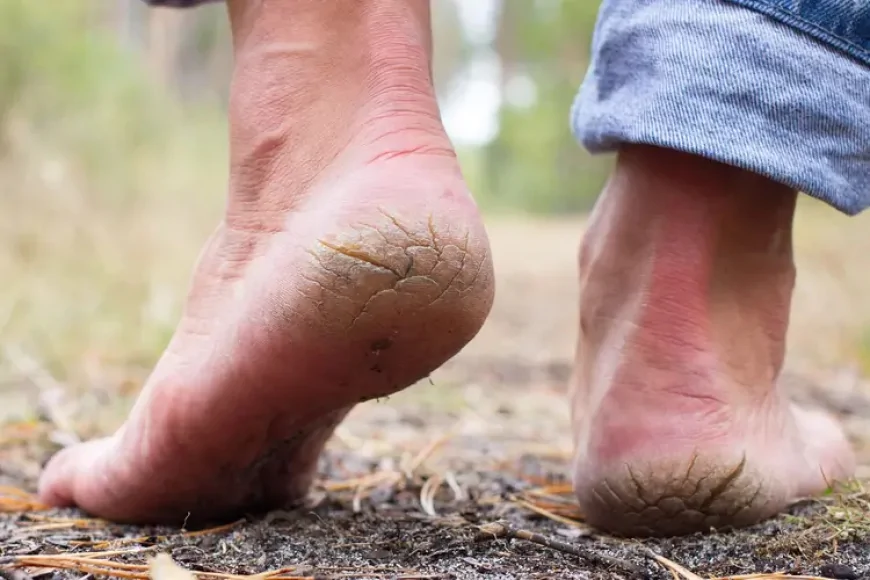What to Know About Cracked Heels
When the skin around your heels becomes dry and thick, it can be the start of cracked heels. Extra pressure on the fat pad of your heels can cause dry, thick skin to form cracks, or heel fissures. While anyone can get heel fissures, some things make them more likely, including:

What Causes Cracked Heels?
When the skin around your heels becomes dry and thick, it can be the start of cracked heels. Extra pressure on the fat pad of your heels can cause dry, thick skin to form cracks, or heel fissures. While anyone can get heel fissures, some things make them more likely, including:
Wearing open-heeled footwear, such as sandals
Taking hot baths or showers
Using harsh soaps
Having cold, dry skin
Dry, cold weather
Standing for long periods
Justin Singh, DPM, a podiatrist at HealthyU Clinics in Arizona, says a medical condition can also cause dry, cracked heels. “There may be something else underlying that’s not well managed and could be affecting the integrity of the skin,” he explains. “So, it’s important to take a step deeper and try to figure out what’s truly causing it.”
Medical conditions that can lead to cracked heels include:
Hypothyroidism, in which your thyroid doesn’t make enough of certain hormones
Juvenile plantar dermatosis, a skin condition in young children
Sjögren’s syndrome, a chronic condition that prevents your body from making enough moisture
Athlete’s foot, a fungal infection
Heel spurs, bony growths on the bottom of your heel
How to Treat Cracked Heels at Home
Most cases of dry, cracked heels can be treated at home. Home remedies include soaking your feet and then moisturizing them at least twice a day. Choose thick creams that have skin softeners in them. A cracked heels remedy includes these steps:
Rest your feet in soapy water for 20 minutes.
Gently scrub with a loofah or pumice stone to remove the thick, hard skin on your heels.
Dry your feet thoroughly.
Apply a heavy moisturizer, such as petroleum jelly, to your dry feet.
Put on a pair of thick socks to keep the moisturizer in place.
When looking for over-the-counter solutions for dry feet, search for labels that say things such as:
Urea
Salicylic acid
Alpha-hydroxy acid
Saccharide isomerate
Lactic acid
These ingredients help soften skin while removing dead skin, but they might cause some stinging or irritation.
Cracked Heels Treatment
If your heels are severely cracked or don’t improve after you’ve treated them for a week, talk to your doctor. “It’s almost like a desert,” Singh explains. “If it’s very dry and cracked, you’ll never get good skin to grow across those areas.”
You may need treatment from a podiatrist or a doctor who specializes in foot, ankle, and lower leg conditions. Possible treatment options include:
Strapping. This involves using a bandage or dressings around the heel to keep your skin from moving around.
Debridement. In this procedure, a medical professional cuts away the thick, hard skin on your heels. Don’t try to do this yourself. You may cut away too much skin, causing an infection.
Medicated cream for cracked heels. Your doctor may give you a prescription for a stronger cream than you can buy over the counter. Prescription-strength creams usually contain a higher percentage of active ingredients, such as urea or salicylic acid.
Skin glue. Your doctor may use glue designed for use on the skin to hold the edges of the heel fissures together. This can allow them to heal.
Shoe inserts. Insoles in your shoes may offer better support by redistributing the weight on your heel. This can prevent the fat pad from expanding sideways and cracking your heels.
Singh also suggests seeing a doctor if you notice redness or other signs of infection, such as an odor or leaking cracks. “If you have cracks that expose your feet to the outside world and germs, then you no longer have an intact barrier against infection.”

